- Destinations
- Travel Styles
- About Us
- Contacts
- Destinations
- Travel Styles
- About Us
Nestled deep within the remote jungles of northern Cambodia, roughly 120 kilometers from Siem Reap, lies Koh Ker - a forgotten treasure of the Khmer Empire that echoes its past grandeur and mystery. Once the thriving capital under King Jayavarman IV, Koh Ker is now more than an ancient city; it’s a rare testament to the architectural and cultural prowess of the Khmer civilization.
What makes Koh Ker a must-visit destination? Join us as we uncover the secrets hidden within its towering temples and guide you on how to explore this captivating UNESCO world heritage site.
For a fleeting period from 928 to 944 AD, Koh Ker held a unique place as the capital of the Khmer Empire under King Jayavarman IV. The king undertook an ambitious construction program, building a series of temples, vast water reservoirs, and the iconic seven-tiered pyramid, Prasat Thom.
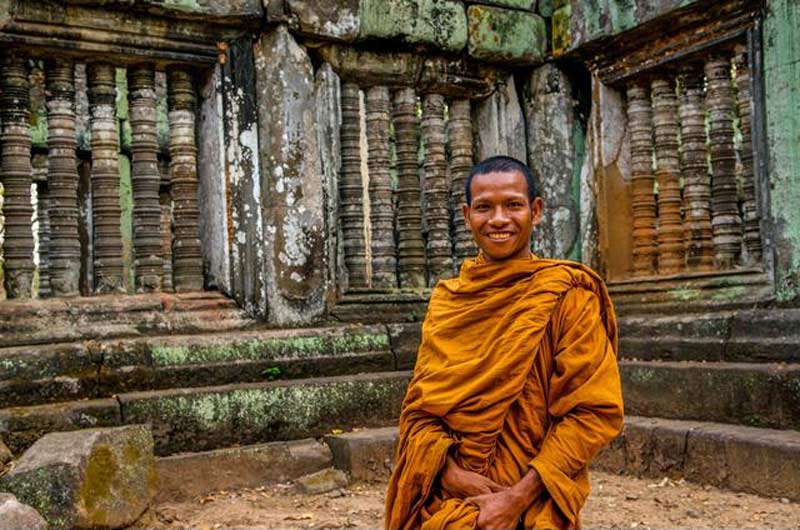
For 16 years, this remote city flourished under Jayavarman IV's vision, with grand structures and sculptures that spoke to the empire's skill and power.
But Koh Ker’s role as a capital was as brief as it was intense. After Jayavarman IV’s death, Rajendravarman II, the nephew of Jayavarman IV, ascended to the throne and moved the capital back to Angkor. Koh Ker, the empire’s ambitious experiment in city-building, was abandoned by 944 AD, reclaimed swiftly by the jungle, and faded from memory, leaving behind what would become one of the most “ephemeral” wonders of the Khmer Empire.
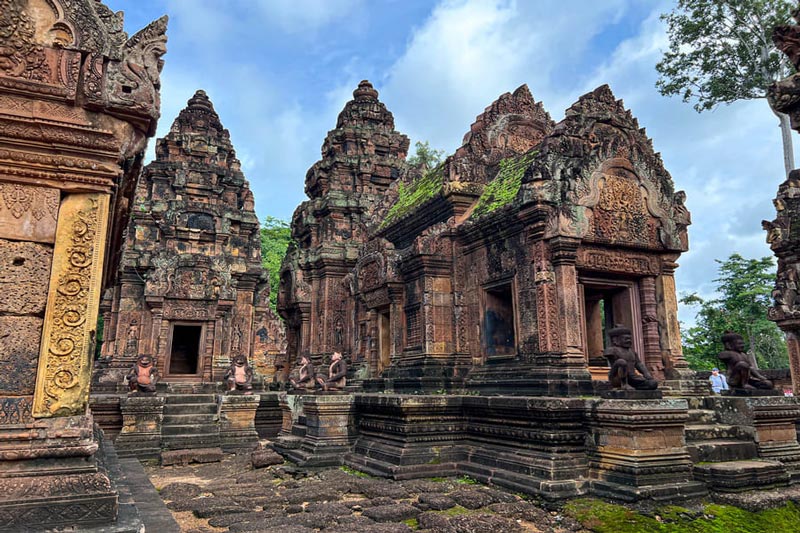
For over a thousand years, Koh Ker’s grand temples and reservoirs lay clandestine, shrouded in jungle and mystery. It wasn’t until 2003 - 1,059 years after it was forgotten - that Koh Ker was officially rediscovered and introduced to the modern world as a lost Khmer marvel. On September 17, 2023, the site was inscribed on the UNESCO World Heritage List, recognizing its cultural and historical significance.
Koh Ker showcases a distinctive layout, with its main temple complex oriented 14 degrees north of cardinal east, a huge difference from typical Angkorian architecture. This unique orientation aligns with celestial events, such as the sun’s rise during the Khmer New Year, demonstrating an early example of cosmic and religious planning in city design.
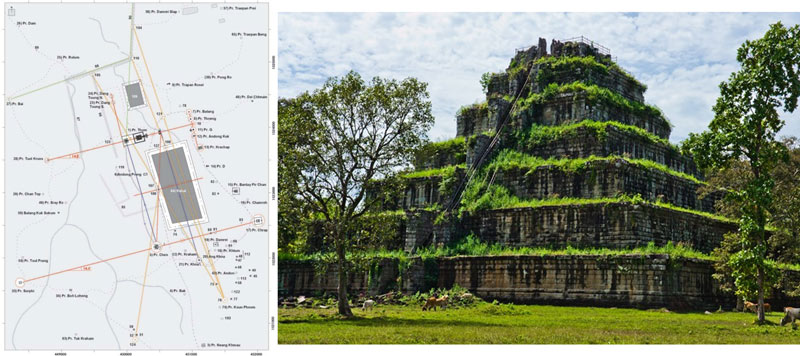
The centerpiece, Prasat Thom, features an impressive seven-tiered pyramid that reaches 36 meters high. This architectural choice marks a shift from the concentric layouts common to other Khmer temples, symbolizing a new architectural identity for the Khmer Empire.
Koh Ker features innovative water management systems that play a vital role in religious rituals. Rainwater flows through sacred symbols and lingas, leading to a ceremonial tank that sanctifies the water for worship. This practice echoes the Indian tradition of sacred rivers, highlighting the thoughtful urban planning at Koh Ker.
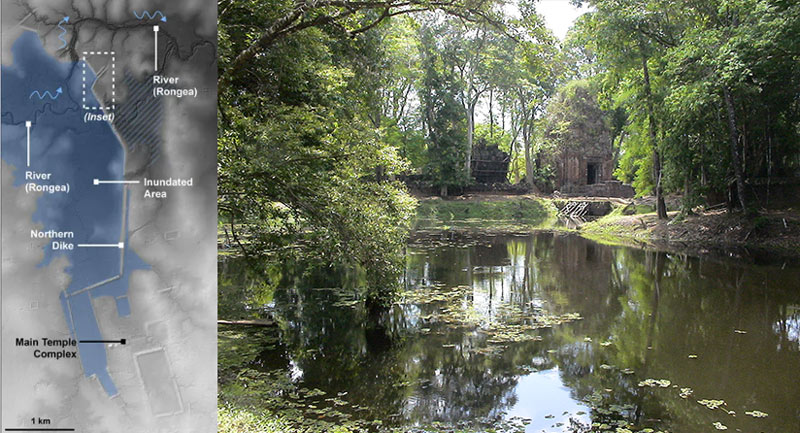
The site stands as a testament to the cultural richness of the Khmer Empire, with numerous temples housing inscriptions in Old Khmer and Sanskrit. These inscriptions offer valuable insights into the social, economic, and religious practices of the time, documenting the organization of labor and resources for temple construction.
>>> How to Say “Hello” in Cambodian: Guide to Khmer Greetings
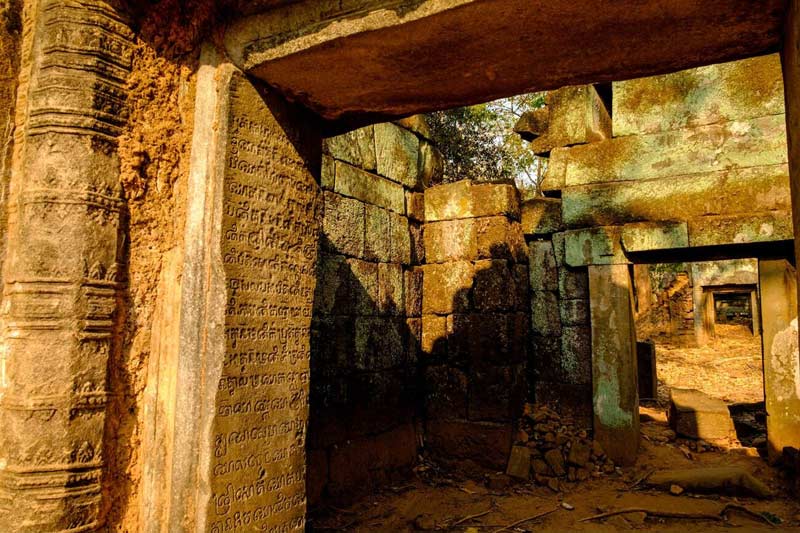
Koh Ker also boasts intricate sculptures, including notable figures like the Garuda and various Shiva lingas, representing the pinnacle of Khmer craftsmanship. Although many artifacts have been looted, some remain in museums, preserving the artistic heritage that once flourished at Koh Ker.
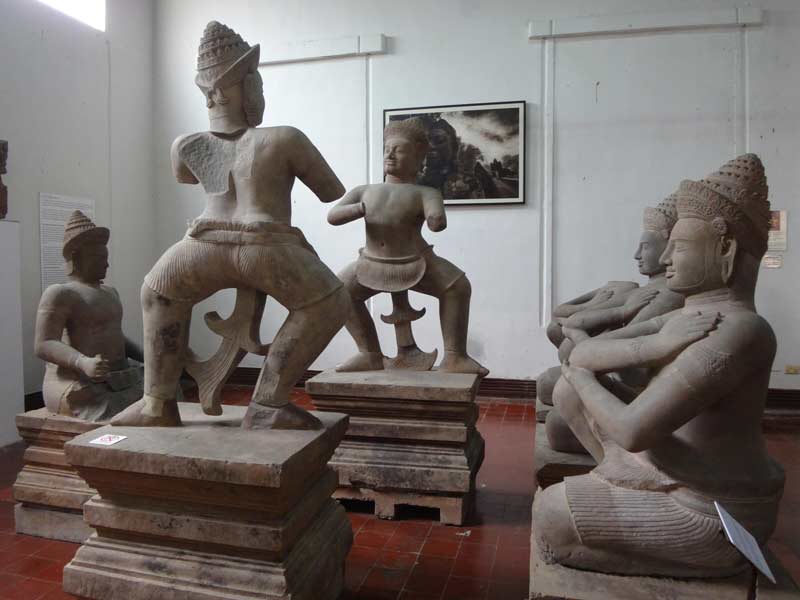
Moreover, the architecture embodies principles of Hindu cosmology, with the temples symbolizing Mount Meru, the axis mundi of the universe. This concept is intricately woven into the city’s layout, creating a sacred geometry that reflects Jayavarman IV's aspirations to connect his kingship with divine authority.
Though both Angkor Wat and Koh Ker once held the status of Khmer Empire capitals, they offer distinctly different experiences.
Angkor Wat is conveniently located just a few kilometers from bustling Siem Reap, making it easily accessible by car, tuk-tuk, or bicycle. Its proximity has contributed to its status as a major tourist destination.
.jpg)
In contrast, Koh Ker is nestled deep within the jungle, located over 120 kilometers from Siem Reap, making it require a bit more effort to reach. The journey usually involves a scenic 2.5-hour drive.
While Koh Ker is less accessible than Angkor Wat, its remoteness adds to its allure.
Both Angkor Wat and Koh Ker showcase the skillful use of sandstone and laterite, though each site approaches these materials differently.
Angkor Wat exemplifies advanced stone masonry, reflecting the pinnacle of Khmer architectural sophistication with its concentric layout centered on a tower symbolizing Mount Meru. This arrangement is surrounded by galleries and moats, aligning with traditional Hindu cosmology.
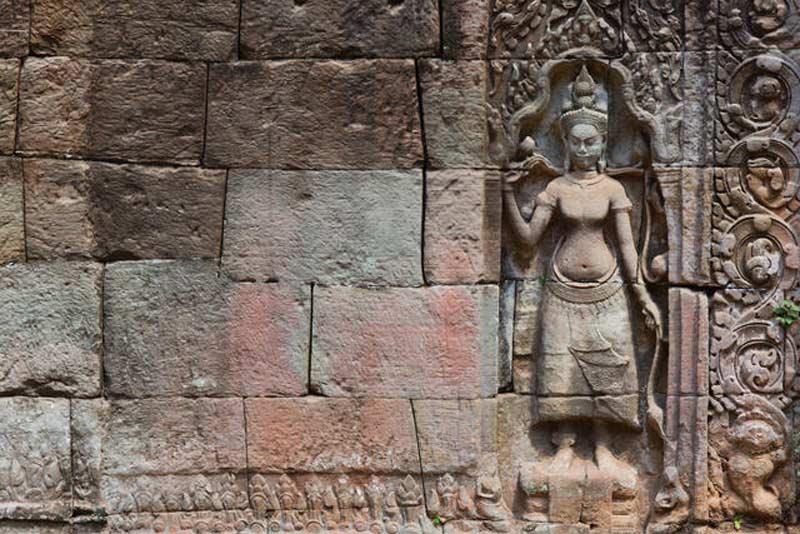
Koh Ker, by contrast, incorporates a distinct style that merges Indian influences with local adaptations, represented by stepped platforms and monumental forms. Prasat Thom, Koh Ker’s main temple, features a linear layout that breaks from the symmetrical, concentric designs typical of Angkor. This unique structure marks an experimental architectural identity.
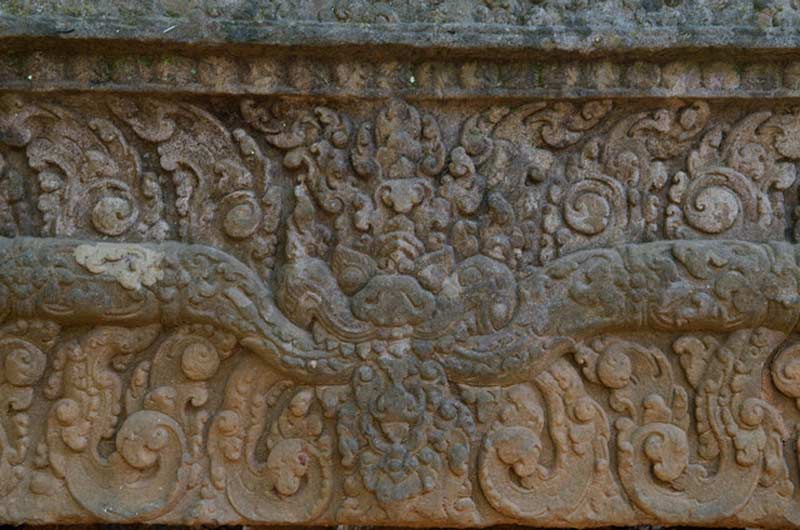
Visiting Angkor Wat offers a vibrant experience, drawing millions of tourists to witness its legendary sunrise and explore its elaborate carvings and lotus ponds.
In contrast, Koh Ker provides a more secluded adventure, capturing the raw spirit of an untamed jungle temple, where sculptures rise from the overgrown paths, inviting exploration.
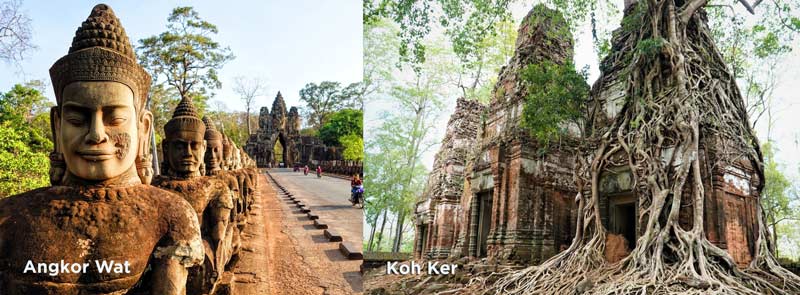
To conclude,
Both Angkor Wat and Koh Ker promise long-lasting experiences - one a majestic cultural icon, the other a quiet marvel. Together, they reveal two sides of the Khmer Empire, each with its unique story.
>>> Explore everything you need to know about Angkor Wat:
The Koh Ker Pyramid, or Prasat Thom, is a stunning centerpiece of the Koh Ker complex, rising majestically to 36 meters with its distinctive seven-tiered design.
Surrounding the pyramid is an impressive 47-meter-wide moat that enhances its regal appearance, bordered by lush vegetation contributing to the serene atmosphere.
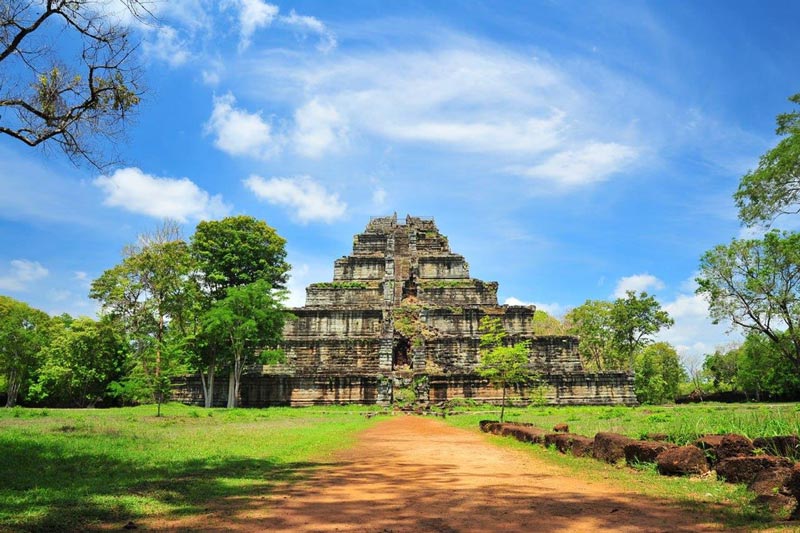
Visitors can explore various chambers, including libraries and a central sanctuary that once housed sacred lingas, revealing the site's spiritual depth. Behind the main structure, 21 towers of varying sizes stand as testaments to its architectural significance.
Prasat Thom also embodies Hindu cosmology, with its orientation aligning with significant astronomical events, such as the equinoxes. This connection between the structure and celestial phenomena highlights the sophistication of Khmer city planning and the cultural importance of Koh Ker as a center of Shiva worship.
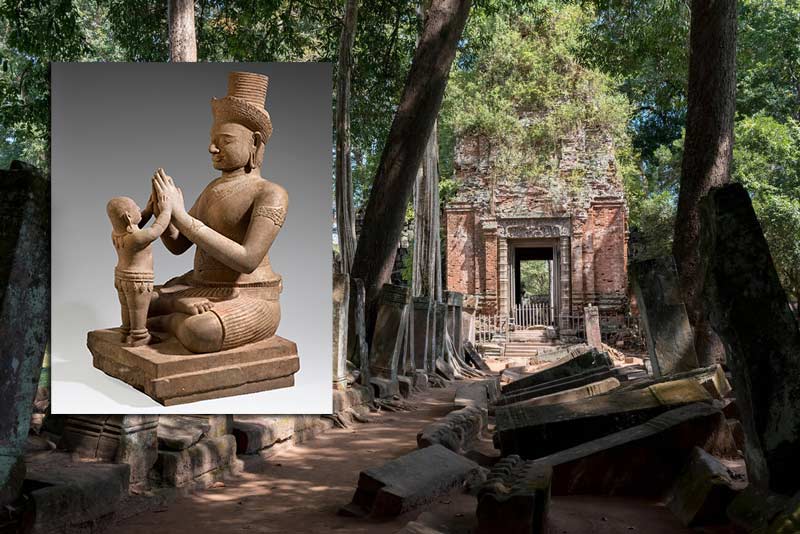
Although the original steep staircase to the top is now unsafe, a newly constructed staircase allows visitors to ascend and enjoy panoramic views of the surrounding jungle.
>>>> 14-Day Cambodia Tour: Explore Temples and Taste Local Delights 🏰🥘
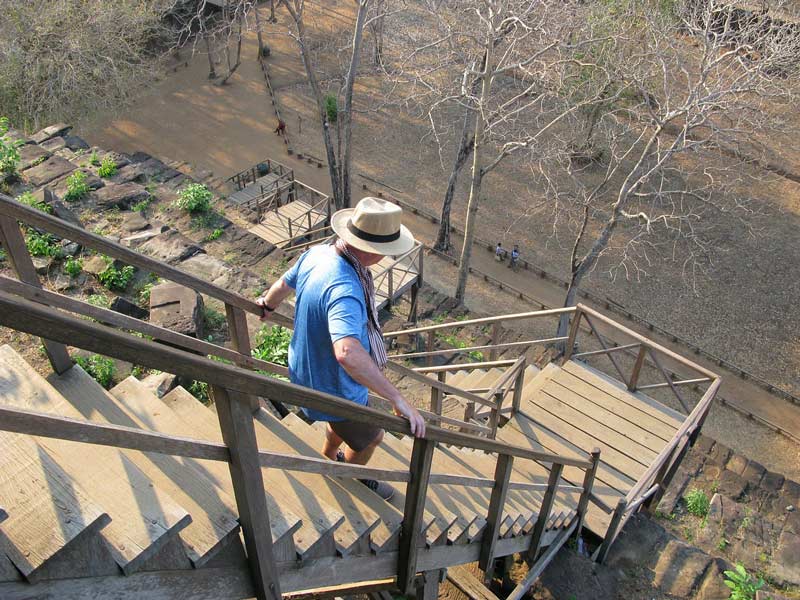
At Koh Ker, the artistry of the Khmer Empire comes to life through stunning sculptures, including the Garuda and various Shiva lingas. These intricate pieces exemplify the peak of Khmer craftsmanship and reflect the spiritual depth of the era.
The temples are adorned with statues depicting episodes from Hindu mythology, showcasing the unique Khmer interpretation of figures. Intricate carvings on door frames and lintels convey themes of power, authority, and the struggle between good and evil.
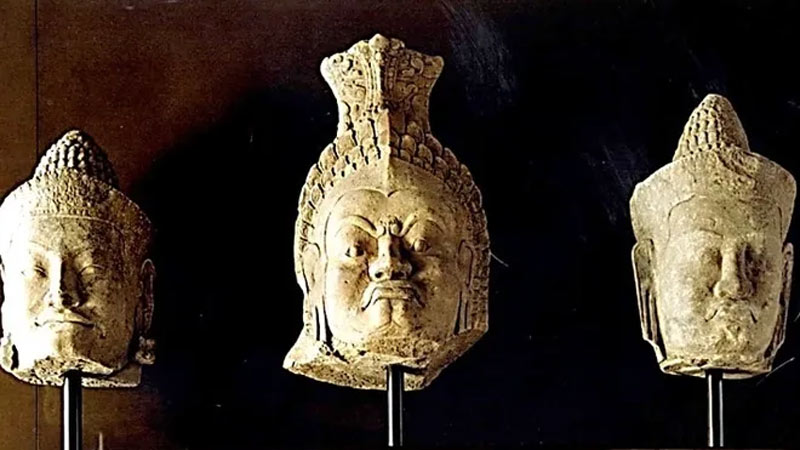
Unfortunately, many of these masterpieces were stolen and sold internationally, although some have found their way into museums in Phnom Penh and beyond.
Among the notable artifacts is a fragment of the Dancing Shiva discovered at Prasat Krahom, currently under restoration at the National Museum of Cambodia. This sculpture is significant as it represents the largest Dancing Shiva in Southeast Asia. The imposing Prasat Krahom, a red brick tower that commands attention, remains one of the most well-preserved structures.
>>> Explore: 14 Must-Buy Cambodian Souvenirs: Treasures of Khmer
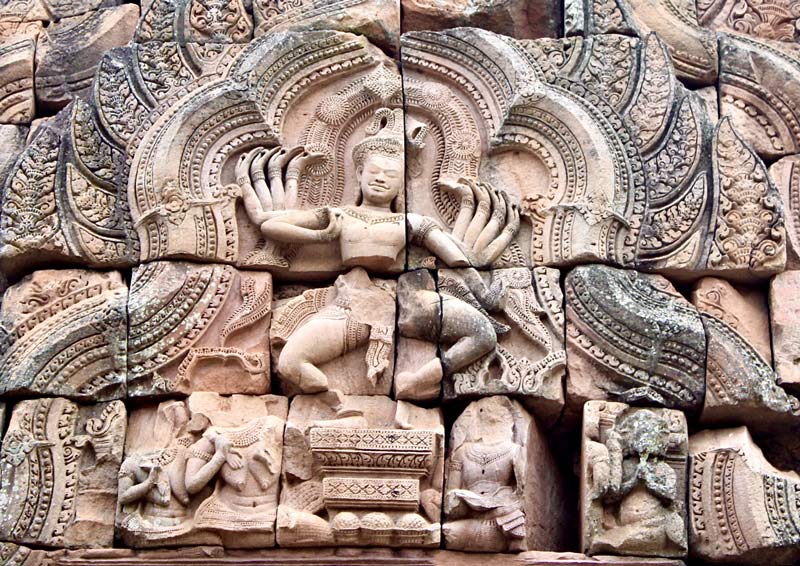
Nearby Prasat Thom, the remnants of two laterite towers stand as testaments to the architectural prowess of Khmer builders. The site features numerous inscriptions in both Old Khmer and Sanskrit, detailing the organization of labor and resources as well as the religious practices centered around Shiva. One inscription notes the consecration of a large Shiva-Linga.
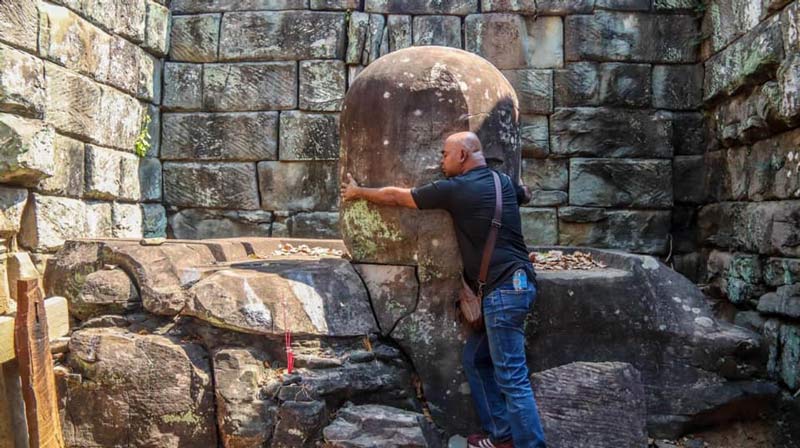
Among the complex’s highlights are the palaces, with their four rectangular buildings surrounding a central courtyard - spaces that likely served as meditation or prayer rooms for the king and his high-ranking nobles.
Koh Ker is home to several smaller temples that, while often overshadowed by Prasat Thom, possess unique religious and architectural value.
Among them, Prasat Pram stands out with its five distinct towers, exemplifying the artistic richness of the site. This temple complex serves as a spiritual center, reflecting the concept of Mount Meru, which represents the center of the universe in Hindu cosmology.
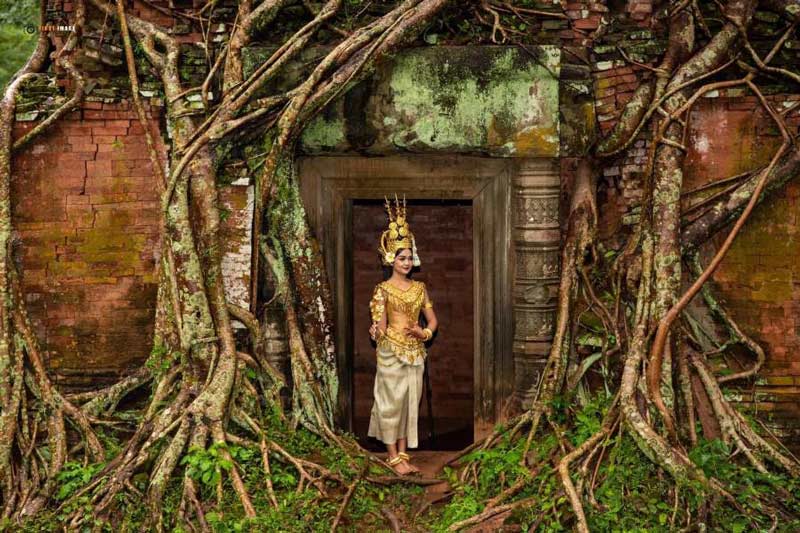
Prasat Bak, once housing a colossal statue of Ganesha, highlights the significance of auspiciousness in rituals, indicating its role as a site for devotional practices aimed at seeking blessings for new ventures or life events.
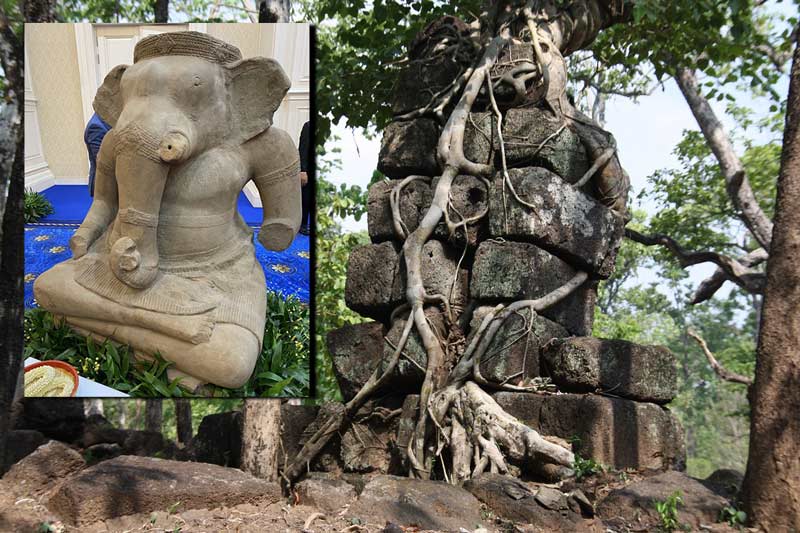
Prasat Chen is distinguished by its fascinating inscriptions that provide insights into the historical context of the time. Dedicated to Vishnu, it underscores the reverence for this important deity within the Hindu pantheon and reflects the rituals and social practices during the Khmer Empire.
>>>> 10 Days in Cambodia: A Culinary and Cultural Adventure 🌄🍜
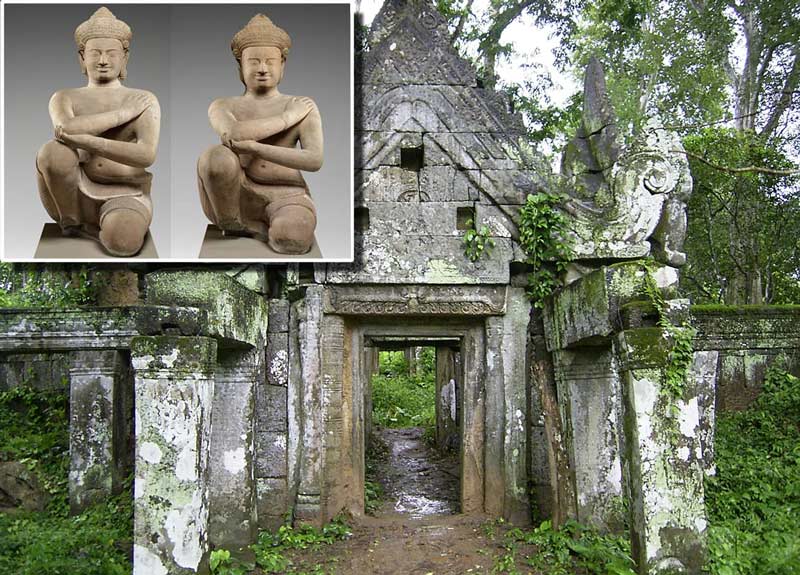
Prasat Balang is notable for its massive lingam, a symbol of Shiva, representing his creative power and fertility. This focal point for devotion reinforces the importance of water in Hindu rituals.
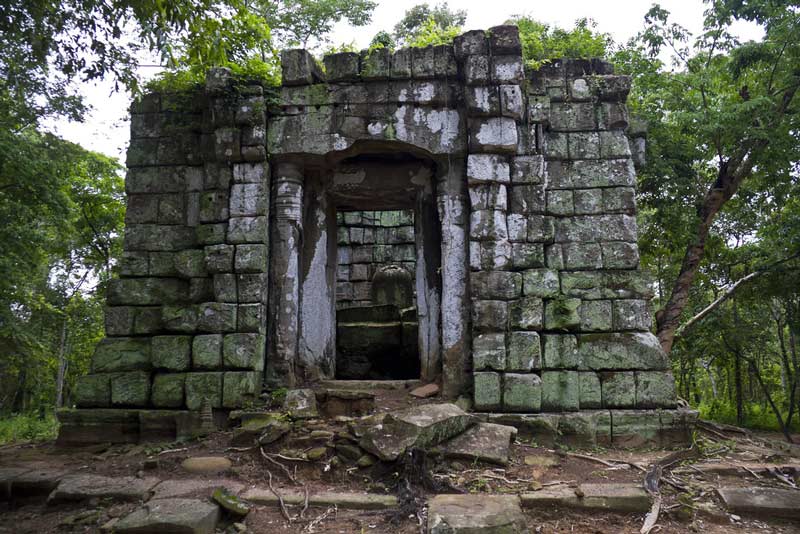
Finally, Prasat Damrei, known as Koh Ker’s elephant sanctuary, is elevated on a platform and showcases impressive stone lions and elephant sculptures. The elephant, often associated with Ganesh, further connects this temple to Koh Ker's spiritual landscape, with design elements that integrate natural and spiritual aspects in the region.
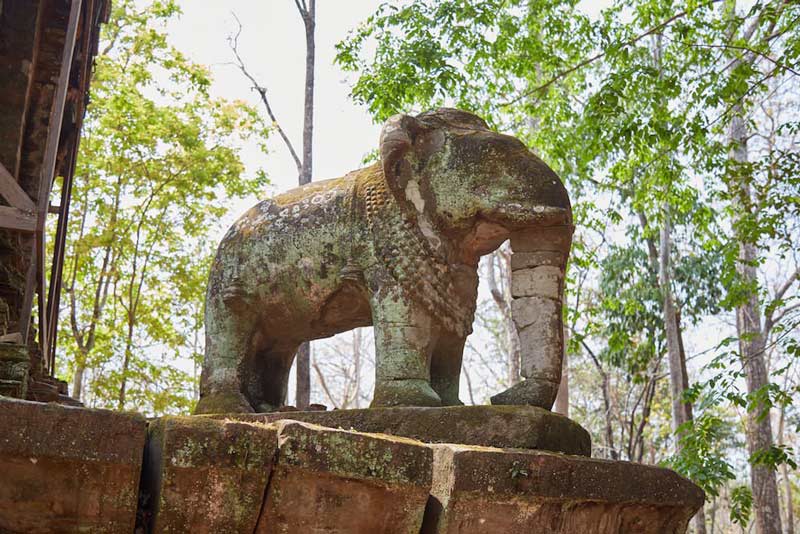
Good to know: Due to its remote location in a sparsely populated, forested region, Koh Ker remains largely untouched by tourism, with surrounding areas still uncleared of mines. As a result, only about a dozen of the ancient city’s 184 monuments are accessible to visitors, creating a sense of discovery as you explore this reservoir.
>>> Read more: Best Places to Visit in Cambodia
Located about 40 kilometers from Koh Ker, Beng Mealea is an early 12th-century Hindu temple surrounded by lush jungle. Its overgrown ruins and collapsed galleries create a captivating atmosphere for exploration. The drive takes approximately 30-40 minutes, making it easy to visit both Koh Ker and Beng Mealea in one day.
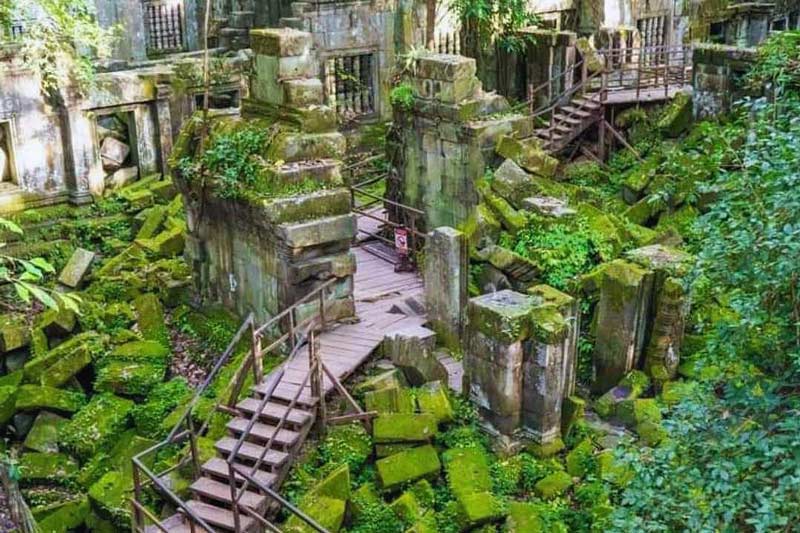
Phnom Kulen National Park is approximately 50 kilometers from Koh Ker and is known for its beautiful waterfalls, sacred rivers, and ancient carvings. This park was a spiritual center for the Khmer kings and continues to attract visitors. The drive takes about 1 hour, you will also have the chance to spot Cambodia’s critically endangered giant ibis.
>>>> Discover Cambodia’s Culture and Cuisine with Our Tours 🍲🇰🇭
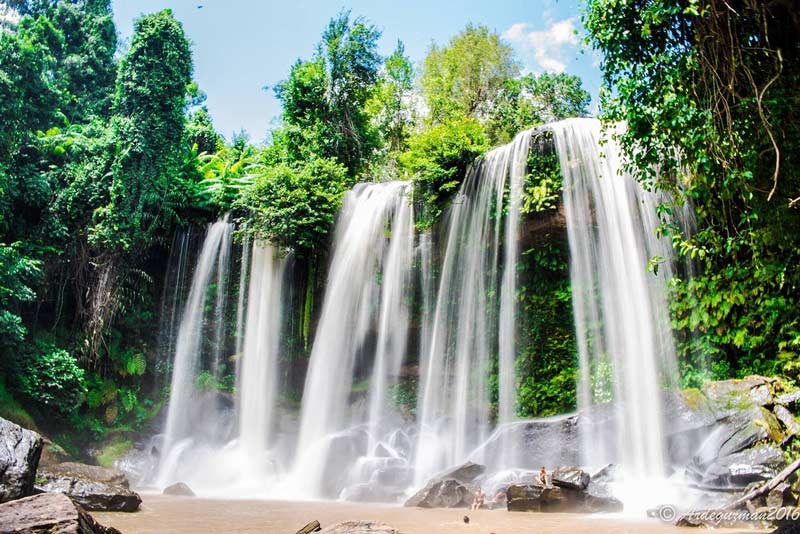
Located about 100 kilometers from Koh Ker, the Temple of Preah Vihear is easily accessible within 1.5 to 2 hours by car. This remarkable temple, dedicated to Shiva, sits majestically on a plateau that offers stunning views of the Cambodian plain below.
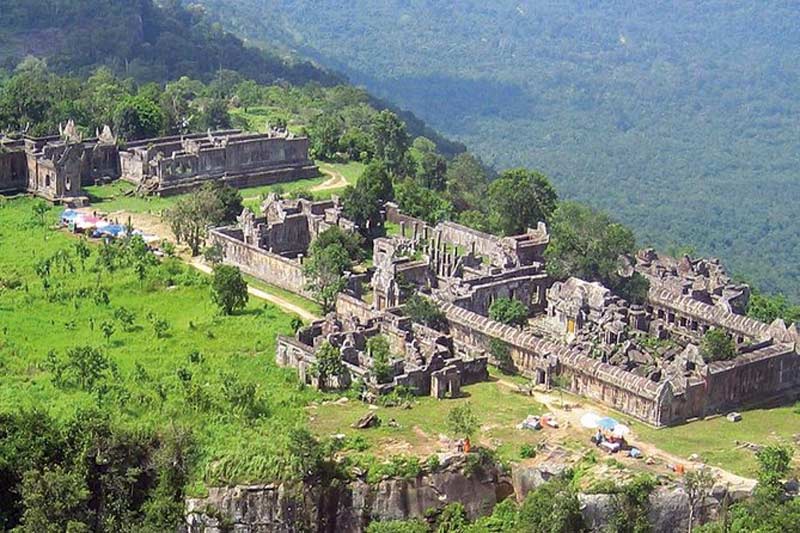
Koh Ker is a great destination for a day trip, though it’s located in a relatively remote area, so planning is essential. It's advisable to arrange a private taxi for the journey, as the pleasant drive takes about two hours from Siem Reap or the new Siem Reap Angkor International Airport. Along the way, you can enjoy scenic views of cashew and banana plantations and rice fields, adding to the overall experience.
Upon arriving at Koh Ker, you'll find a car park equipped with a few amenities, including restaurants, drink kiosks, and market stalls selling fresh coconut drinks and souvenirs.
However, be aware that there are no restroom facilities available on-site, so plan accordingly before your visit. If time allows, consider combining your trip to Koh Ker with visits to nearby attractions like Beng Mealea, making for a well-rounded day of exploration.
How do you pronounce Koh Ker?
Koh Ker is pronounced as "ko-kayer."
Entrance to Koh Ker costs $15, offering excellent value compared to Angkor Wat. Admission is free for children under 12 years old. Please note that admission fees are subject to change without notice.
To avoid long queues, it is recommended to purchase your ticket in advance online or at authorized ticket booths.
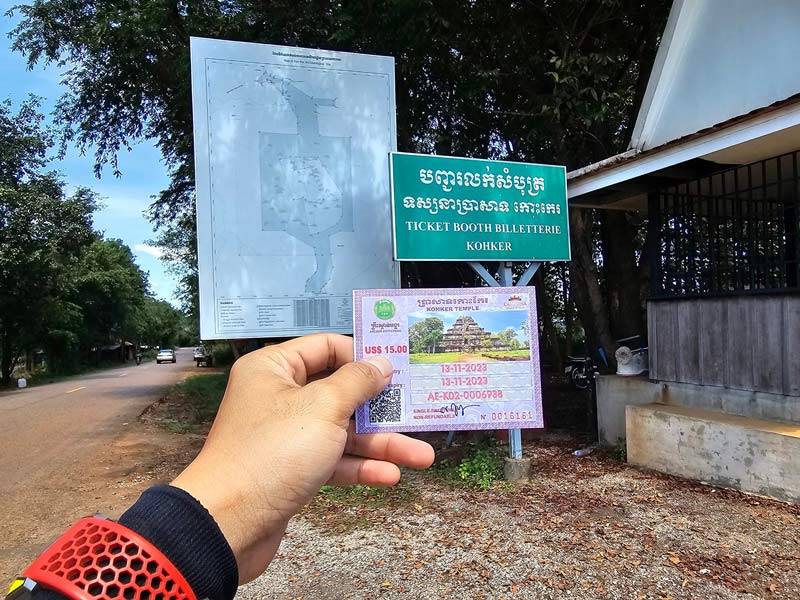
What is the best time to visit Koh Ker?
Koh Ker Temple is open to visitors from 7:00 AM to 5:00 PM daily, and the perfect times to explore Koh Ker are around 8:00 AM or 4:30 PM. Visiting in the late afternoon is a great option, as you'll enjoy better lighting and cooler temperatures.
Is there an additional cost for visiting Beng Mealea?
If you plan to visit Beng Mealea as well, there is a separate entrance ticket available for $5. To ensure a smooth experience, ask your driver to take you to a ticket booth on the way out of town to purchase your tickets for both sites.
How long did it take to build Koh Ker?
Koh Ker was constructed over a period of twenty-three years and served as one of two rival capitals of the Khmer Empire, alongside Angkor.
What food can I find near Koh Ker temple?
Amok: A fragrant curry made with fish or chicken, coconut milk, and Khmer curry paste, usually served with steamed rice.
Lok Lak: Stir-fried beef marinated in coconut milk, lime juice, and fish sauce, often served with lettuce, tomatoes, and cucumbers for wrapping.
Nom Banh Chok: Traditional rice noodles topped with fish sauce, lime juice, green beans, fresh herbs, and roasted peanuts.
>>> Cambodian Cuisine: Top 15 Unmissable Dishes!!!
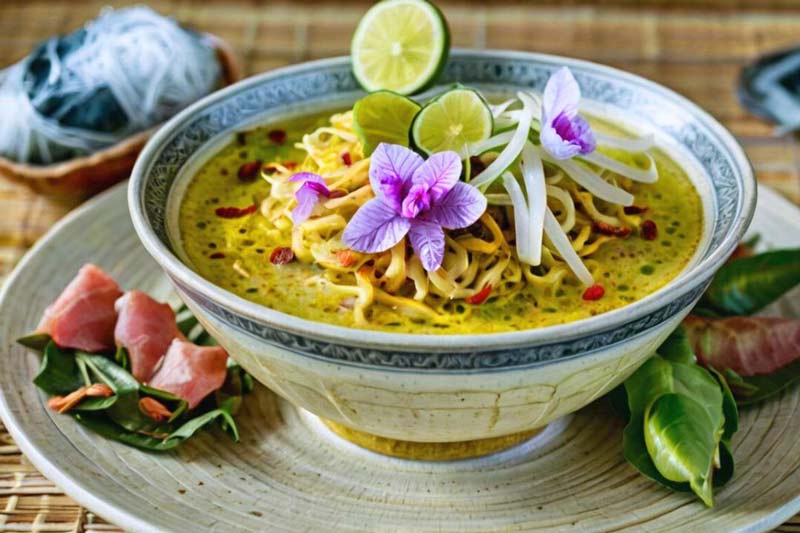
Our final words,
Koh Ker is easily accessible and offers an ideal day trip, making it a must-visit destination for any history and culture enthusiast. Located in the picturesque countryside, this site features a pleasant drive and can be conveniently combined with nearby temple sites. For those seeking a break from traditional temples, Koh Ker’s unique pyramid structure and breathtaking views from the top provide a refreshing experience that captivates visitors of all ages. So, when you’re in the Angkor Wat area, consider adding Koh Ker to your itinerary.
Have you explored Koh Ker or other ancient sites in Cambodia? What memorable experiences did you have? We’d love to hear your thoughts and tips in the comments below!
>>>>🏔️ Continue your Cambodian trip with us 🏔️:
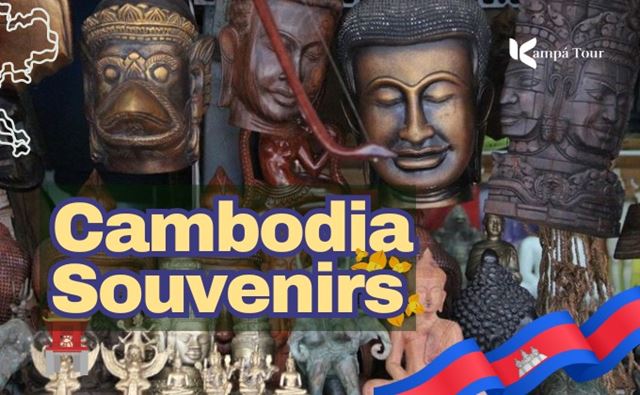


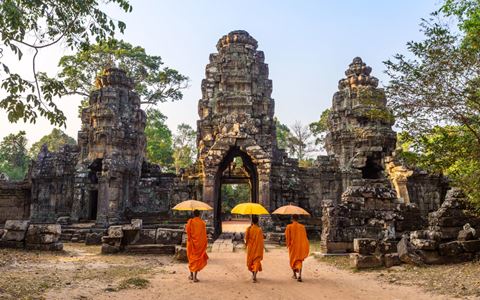 The Greatest
The Greatest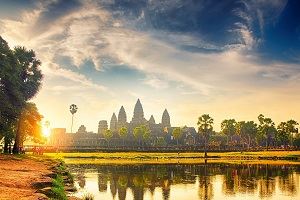 The Essentials
The Essentials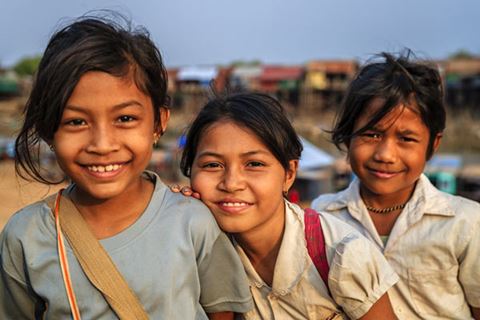 Classic and Cutural
Classic and Cutural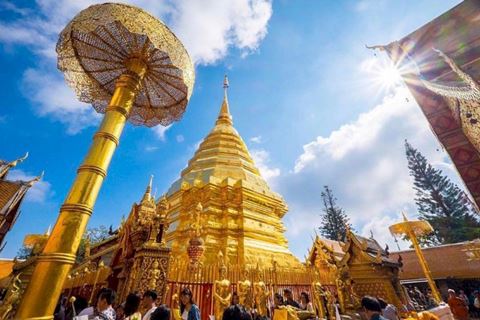 The Essentials
The Essentials